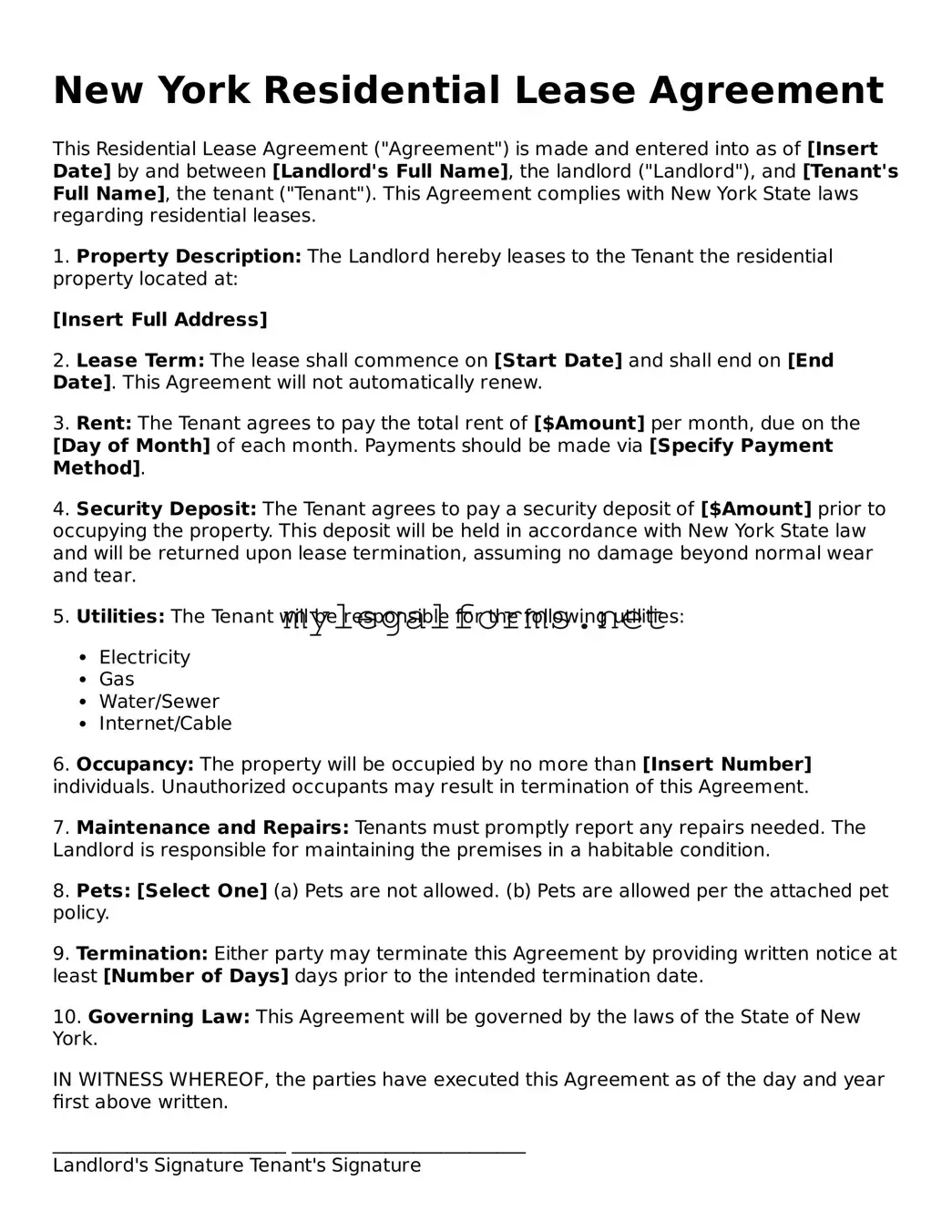New York Residential Lease Agreement
This Residential Lease Agreement ("Agreement") is made and entered into as of [Insert Date] by and between [Landlord's Full Name], the landlord ("Landlord"), and [Tenant's Full Name], the tenant ("Tenant"). This Agreement complies with New York State laws regarding residential leases.
1. Property Description: The Landlord hereby leases to the Tenant the residential property located at:
[Insert Full Address]
2. Lease Term: The lease shall commence on [Start Date] and shall end on [End Date]. This Agreement will not automatically renew.
3. Rent: The Tenant agrees to pay the total rent of [$Amount] per month, due on the [Day of Month] of each month. Payments should be made via [Specify Payment Method].
4. Security Deposit: The Tenant agrees to pay a security deposit of [$Amount] prior to occupying the property. This deposit will be held in accordance with New York State law and will be returned upon lease termination, assuming no damage beyond normal wear and tear.
5. Utilities: The Tenant will be responsible for the following utilities:
- Electricity
- Gas
- Water/Sewer
- Internet/Cable
6. Occupancy: The property will be occupied by no more than [Insert Number] individuals. Unauthorized occupants may result in termination of this Agreement.
7. Maintenance and Repairs: Tenants must promptly report any repairs needed. The Landlord is responsible for maintaining the premises in a habitable condition.
8. Pets: [Select One] (a) Pets are not allowed. (b) Pets are allowed per the attached pet policy.
9. Termination: Either party may terminate this Agreement by providing written notice at least [Number of Days] days prior to the intended termination date.
10. Governing Law: This Agreement will be governed by the laws of the State of New York.
IN WITNESS WHEREOF, the parties have executed this Agreement as of the day and year first above written.
_________________________ _________________________
Landlord's Signature Tenant's Signature
_________________________ _________________________
Date Date
